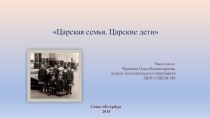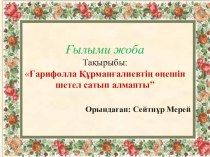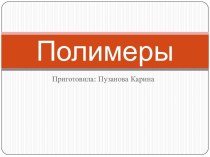- Главная
- Разное
- Бизнес и предпринимательство
- Образование
- Развлечения
- Государство
- Спорт
- Графика
- Культурология
- Еда и кулинария
- Лингвистика
- Религиоведение
- Черчение
- Физкультура
- ИЗО
- Психология
- Социология
- Английский язык
- Астрономия
- Алгебра
- Биология
- География
- Геометрия
- Детские презентации
- Информатика
- История
- Литература
- Маркетинг
- Математика
- Медицина
- Менеджмент
- Музыка
- МХК
- Немецкий язык
- ОБЖ
- Обществознание
- Окружающий мир
- Педагогика
- Русский язык
- Технология
- Физика
- Философия
- Химия
- Шаблоны, картинки для презентаций
- Экология
- Экономика
- Юриспруденция
Что такое findslide.org?
FindSlide.org - это сайт презентаций, докладов, шаблонов в формате PowerPoint.
Обратная связь
Email: Нажмите что бы посмотреть
Презентация на тему Phonostylistics and styles
Содержание
- 2. Problems of phonostylisticsFunctional style – a set
- 3. Extralinguistic situation All the components of
- 4. Scene/ settingphysical orientations of the participants (the
- 5. Style-modifying factors:The aim of communication is the
- 6. Speaker’s attitudeAny oral communication reflects a variety
- 7. The form of communication
- 8. The Classification of Phonetic Styles:Gaiduchic (correlates with
- 9. Dubovsky (degrees of formality)informal ordinaryformal neutralformal officialinformal familiardeclamatory
- 10. Informational Styleusage: Mass Media, business communication, classroom
- 12. Academic Style:is used in lecturing talk and
- 14. Publicistic stylepolitical speech, sermons, debates.volitional and desiderativenever
- 15. Declamatory styleOn the prosodic level the markers
- 16. Conversational style 1. inexplicitness of the language—"incompleteness"
- 17. decentralized stress and sudden jumps down on
- 18. Slang:very informal or colloquial vocabulary e.g. My
- 19. Скачать презентацию
- 20. Похожие презентации
Problems of phonostylisticsFunctional style – a set of language means used in a particular situation.Phonostylistics is the study of the way phonetic units, both segmental (sounds) and suprasegmental (intonation), are used in a particular extralinguistic situation.


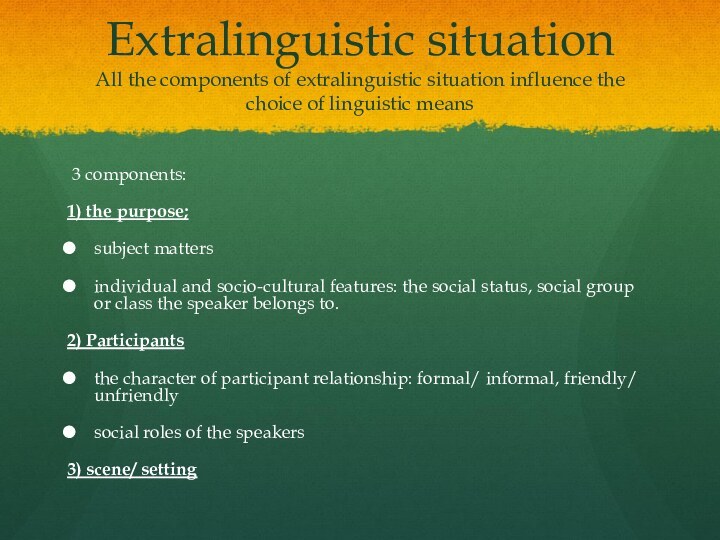

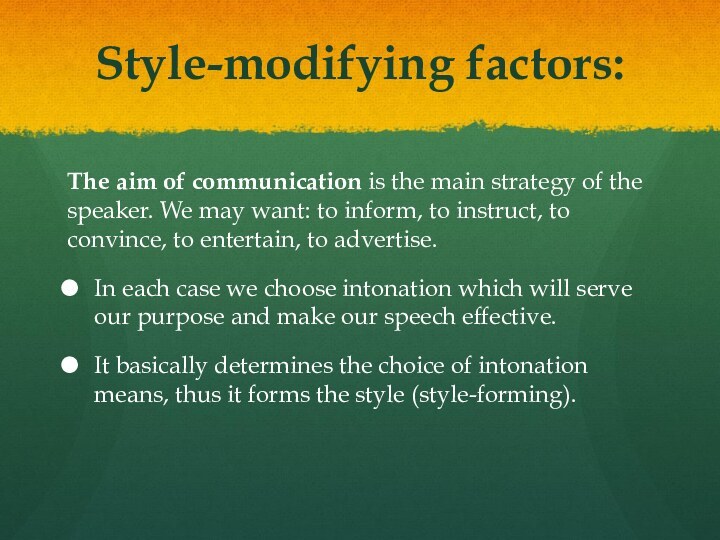







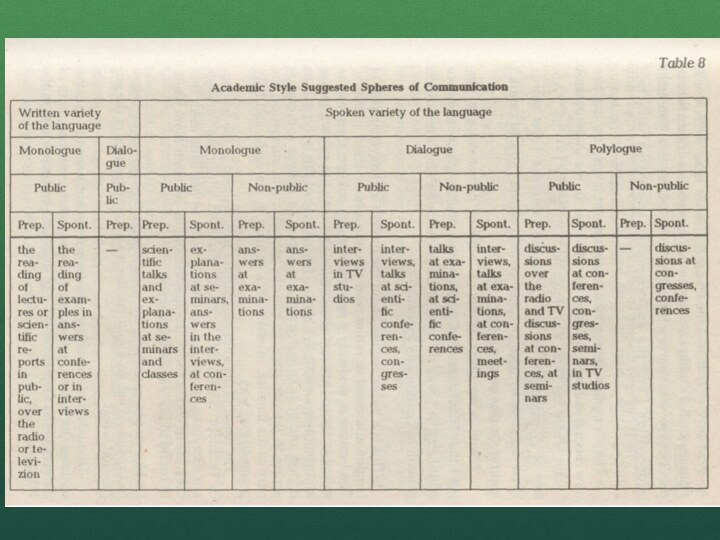






Слайд 2
Problems of phonostylistics
Functional style – a set of
language means used in a particular situation.
study of the way phonetic units, both segmental (sounds) and suprasegmental (intonation), are used in a particular extralinguistic situation.Слайд 3 Extralinguistic situation All the components of extralinguistic situation
influence the choice of linguistic means
3 components:
1) the
purpose;subject matters
individual and socio-cultural features: the social status, social group or class the speaker belongs to.
2) Participants
the character of participant relationship: formal/ informal, friendly/ unfriendly
social roles of the speakers
3) scene/ setting
Слайд 4
Scene/ setting
physical orientations of the participants (the distance
between people, proximics studies it)
public/ non-public, formal/ informal, monoloquing/
poliloguing, dialoguing.the channel of communication: face to face, public presentation, telephone, mass media.
Слайд 5
Style-modifying factors:
The aim of communication is the main
strategy of the speaker. We may want: to inform,
to instruct, to convince, to entertain, to advertise.In each case we choose intonation which will serve our purpose and make our speech effective.
It basically determines the choice of intonation means, thus it forms the style (style-forming).
Слайд 6
Speaker’s attitude
Any oral communication reflects a variety of
attitudes and emotions, concerning the listener, the subject matter
and etc.Intonation varieties are as numerous as varieties of attitudes and emotions are. The speaker can be involved/ indifferent, friendly/ hostile and so on.
It’s both emotions and attitudes we should take into consideration.
Слайд 8
The Classification of Phonetic Styles:
Gaiduchic (correlates with functional
styles of language)
solemn (торжественный)
scientific business (научно-деловой)
official business (официально-деловой)
everyday (бытовой)
familiar
(непринуждённый)
Слайд 9
Dubovsky (degrees of formality)
informal ordinary
formal neutral
formal official
informal familiar
declamatory
Слайд 10
Informational Style
usage: Mass Media, business communication, classroom teaching.
The
aim is to convey information. There’s little personal involvement.
The speaker is detached.The typical intonation patterns are: Falling/ Mid-level Head + Low Fall/ Low Rise/ Mid-level tone.
The pitch level is generally medium or low and the pitch range is from medium to narrow. The tempo is not greatly varied. Hesitation pauses.
Слайд 12
Academic Style:
is used in lecturing talk and conferences,
academic discussion.
The aim is to convey information and to
instruct (volitional function). A pragmatic aim.Falling Head/ High Head + High Fall/ Fall-Rise(=referring).
Compound: Rise-Fall. The levels are high or medium. The ranger
Short intonation groups predominate. The tempo is greatly varied. Emphatic pauses are often used. Loudness is rather high.
Слайд 14
Publicistic style
political speech, sermons, debates.
volitional and desiderative
never spontaneous
The use of prosodic contrasts makes the speaker sometimes
go to extremes and become needlessly dramatic.
Слайд 15
Declamatory style
On the prosodic level the markers of
the declamatory style reading are:
Slow tempo, caused by the
lento rate of utterances and prolonged pauses, especially at the passage boundaries.Stable rhythmicality.
The use of the falling terminal tones in initial intonation groups, the increase of their range with the emphasis.
on the stage, reciting literary texts.
"artistic, acquired or stage”
highly emotional and expressive
attitudinal, volitional and intellectual functions of intonation are of primary importance here
it is always a written form of the language read aloud or recited.
Слайд 16
Conversational style
1. inexplicitness of the language—"incompleteness" of
many utterances as the context makes it clear what
was meant by the speaker,2. conversations are characterized by the lack of planning and the randomness of subject matter. They are very often unpredictable, not guided to an overall theme as, for example, in our first conversation.
3. a high proportion of "errors" involving hesitation phenomena, slips of the tongue and all sorts of overlapping and simultaneous speech. The distribution of hesitancy is very significant, it is strongly influenced by creative thinking and produces a cyclic pattern. They are of primary significance, the avoidance of hesitation devices and "errors" may produce a wrong effect and lead to a different type of speech style.
– everyday communication.
entire range of prosodic effects.
intonation groups are rather short, their potentially lengthy tone units tend to be broken
Слайд 17
decentralized stress and sudden jumps down on communicative
centers
heads are usually level, or rarely, falling. Falling heads
occur only in groups consisting of several stressed syllables.simple falling and rising tones in nuclei are common
emphatic tones occur in highly emotional contexts.
the tempo of colloquial speech is very varied (fast natural speed + the impression of "slowness” because of a great number of hesitation pauses: hesitant drawls)
no pauses between their parts, very often people speak simultaneously, interrupt each other.
frequency of silence for purposes of contrastive pause as opposed to its being required simply for breath-taking
tempo is very flexible in this style: it is uneven with and between utterances.
pauses may occur randomly, not just at places of grammatical junctions










